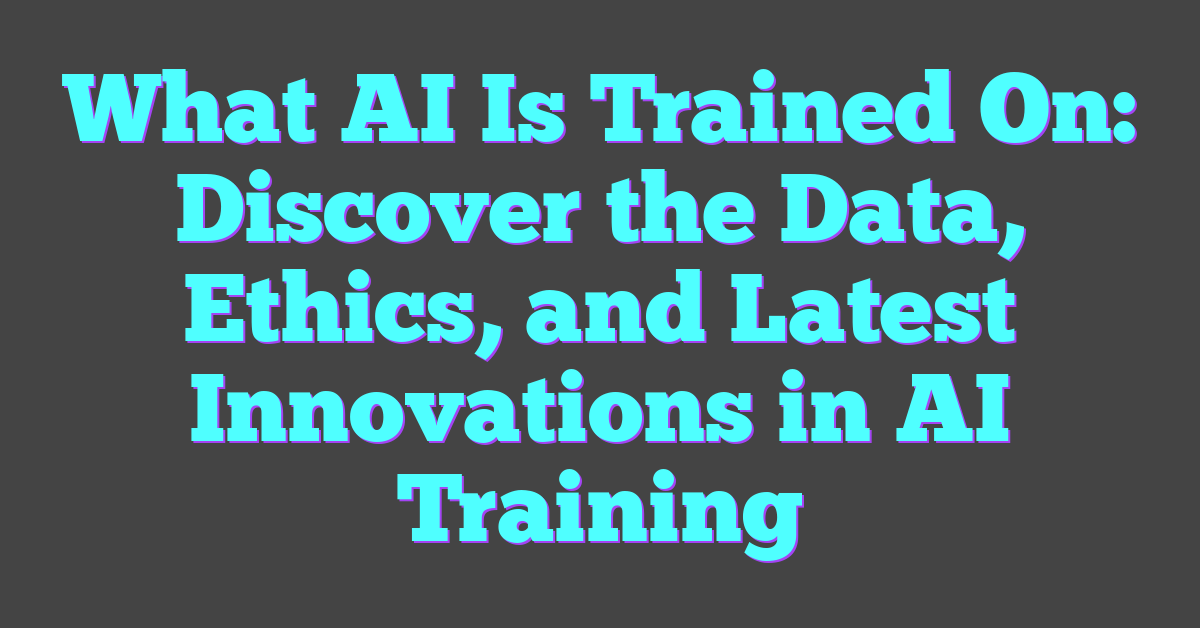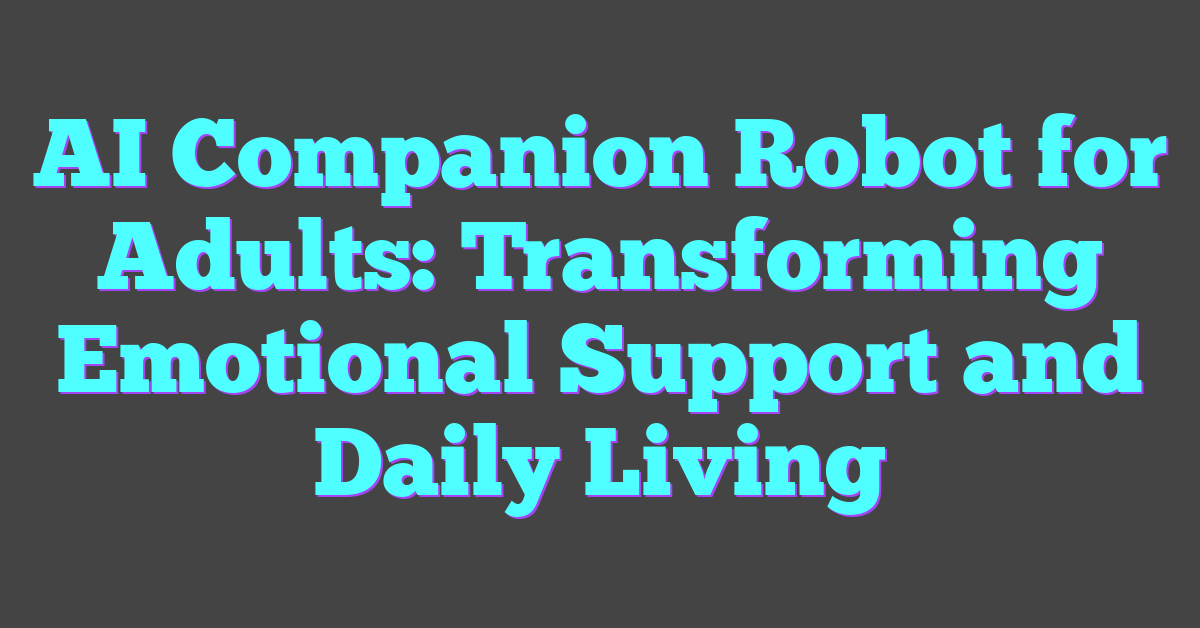Artificial Intelligence (AI) has become a buzzword, but many people still wonder what fuels these smart systems. At its core, AI is trained on vast amounts of data, allowing it to recognize patterns, make decisions, and even predict future outcomes. From images and text to voice recordings and real-time user interactions, the variety of data sources is staggering.
Understanding what AI is trained on helps demystify how these systems work. For instance, a language model like GPT-3 learns from an extensive range of text data, absorbing nuances in language, grammar, and context. This training enables AI to generate human-like responses, making it an invaluable tool in various applications. So, what exactly goes into training AI, and why does it matter? Let’s dive in and explore the fascinating world of AI training data.
The Basics of Artificial Intelligence
Artificial Intelligence (AI) has transformed how we interact with technology. It’s trained on data to identify patterns, make decisions, and predict outcomes.

Understanding AI Models
AI models are mathematical algorithms that simulate human intelligence. These models range from simple linear regressions to complex neural networks. AI systems process large datasets to recognize patterns and make informed decisions.
- Supervised Learning Models: These models learn from labeled data. For instance, a dataset of images with labels identifying cats or dogs.
- Unsupervised Learning Models: These models identify patterns in unlabeled data. Clustering algorithms are examples, grouping data points with similar features.
- Reinforcement Learning Models: These models learn by interacting with an environment. They receive rewards for performing desired actions, akin to training a pet with treats.
Types of AI Training Data
Training data is vital for AI development. Different types of data help train various AI models, enhancing their capabilities.
- Text Data: Text from books, articles, and websites helps train language models like GPT-3. This data improves natural language understanding and generation.
- Image Data: Photos and diagrams train computer vision models. They learn to identify objects, people, and scenes in pictures.
- Audio Data: Speech and sound recordings help train models for voice recognition and sound classification.
- Sensor Data: Data from sensors (e.g., GPS, accelerometers) trains models for applications in IoT and autonomous vehicles.
By understanding AI models and the types of training data, we grasp the foundation of AI systems. This knowledge helps us appreciate how different data sources shape AI capabilities and their real-world applications.
Sources of Training Data for AI
Training data forms the backbone of AI development. Various sources contribute diverse datasets, making AI models more robust and versatile.
Public Datasets and Their Impact
Public datasets are freely available and can be accessed by anyone. Researchers, developers, and data scientists often use these datasets to train and validate AI models. Public datasets, like ImageNet for image recognition and the Common Crawl dataset for natural language processing, help standardize benchmarks and foster innovation. These open-access datasets accelerate AI advancements by allowing widespread experimentation and collaboration.
| Dataset | Field | Notable Use |
|---|---|---|
| ImageNet | Image Recognition | Training CNNs |
| Common Crawl | NLP | Language model training |
| MNIST | Handwritten Digits | Handwriting recognition |
Companies That Contribute to AI Training
Tech companies often create and share datasets to advance AI research. Google, for instance, releases datasets like Open Images Dataset and YouTube-8M. Microsoft provides datasets such as MS COCO for image captioning and conversational AI datasets. These contributions help AI researchers access high-quality data and improve AI capabilities across various domains.
| Company | Dataset | Application |
|---|---|---|
| Open Images | Object detection | |
| Microsoft | MS COCO | Image captioning |
| DeepFace | Facial recognition |
These data sources collectively enhance the ability of AI to perform complex tasks by providing diverse and extensive training material.
Ethical Considerations in AI Training
AI training involves significant ethical considerations that impact its efficacy and fairness. Understanding these considerations ensures responsible AI deployment.
Bias and Fairness in Data
Bias and fairness in data are critical in AI training. Training data must represent diverse groups to prevent AI from making biased decisions. For example, if an AI model only includes data from a specific demographic, it might favor that group in its predictions. Ensuring data diversity and applying fairness algorithms helps mitigate bias.
Privacy Issues and Data Security
Privacy issues and data security are paramount in AI training. When AI models use personal data, securing this information against breaches is essential. Measures such as anonymization and encryption protect user data. Additionally, regulatory frameworks like GDPR ensure that data handling adheres to strict privacy standards, fostering trust in AI systems.
Innovations in AI Training
Recent advancements in Artificial Intelligence (AI) training have revolutionized the field, offering new techniques and methods to enhance model performance effectively.
Advanced Techniques and Algorithms
Improvements in AI training involve various advanced techniques and algorithms. Transformer models introduced by Vaswani et al. (2017) have significantly impacted Natural Language Processing (NLP). They use self-attention mechanisms to capture context more effectively than traditional RNNs. Convolutional Neural Networks (CNNs), pioneered by LeCun et al., excel in image recognition tasks by mimicking the human visual system.
Another key innovation is the GAN (Generative Adversarial Network) framework, introduced by Ian Goodfellow in 2014. GANs consist of two networks: a generator and a discriminator. These networks compete, resulting in high-quality synthetic data generation. Reinforcement Learning (RL) techniques like Q-Learning and Proximal Policy Optimization (PPO) further optimize decision-making processes in dynamic environments.
The Role of Synthetic Data
Synthetic data plays a pivotal role in improving AI training. It addresses data scarcity and privacy issues by generating artificial datasets that mimic real-world data. Synthetic data can augment training datasets, enabling models to generalize better across different scenarios.
For instance, autonomous vehicle training leverages synthetic data to simulate various driving conditions, ensuring robust performance. In healthcare, synthetic medical records facilitate AI development without compromising patient privacy. This approach not only enhances model accuracy but also democratizes access to high-quality training data across industries.
Conclusion
AI’s ability to analyze diverse data types and recognize patterns is revolutionizing various industries. From Transformer models enhancing natural language processing to GANs generating synthetic data, the advancements are impressive. As AI continues to evolve, it’s crucial to address ethical considerations to ensure fairness and privacy. By leveraging synthetic data, AI can overcome data scarcity and privacy issues, paving the way for innovations in autonomous vehicles, healthcare, and beyond. The future of AI training holds immense potential, promising smarter, more efficient solutions across the board.
Frequently Asked Questions
What is Artificial Intelligence (AI)?
Artificial Intelligence (AI) is a technology that allows machines to learn from data, recognize patterns, and make decisions, simulating human intelligence.
How does AI analyze data to recognize patterns?
AI uses algorithms and machine learning models to process and analyze vast amounts of data, identifying patterns and relationships that inform decision-making processes.
What types of data are important for AI training?
Text, image, and sensor data are critical for training AI systems, providing diverse and comprehensive inputs that enhance AI’s learning capabilities.
Why are ethical considerations important in AI training?
Ethical considerations, including fairness and privacy, are crucial to ensure AI systems are unbiased and respect user privacy, fostering trust and compliance with regulations.
What are Transformer models and their role in AI?
Transformer models are advanced neural networks used in Natural Language Processing (NLP) to efficiently handle and understand human language, improving AI’s communication abilities.
How do Convolutional Neural Networks (CNNs) work?
CNNs are specialized neural networks designed for image recognition tasks, capable of identifying and classifying features within visual data for accurate analysis.
What are Generative Adversarial Networks (GANs)?
GANs are AI models that generate synthetic data by pitting two neural networks against each other, enhancing the quality and diversity of training datasets.
How does synthetic data improve AI training?
Synthetic data addresses data scarcity and privacy issues by providing ample, diverse, and anonymized data for training AI, improving performance while safeguarding privacy.
What industries benefit from AI advancements in synthetic data?
Industries like autonomous vehicles and healthcare benefit significantly, as synthetic data enhances the accuracy, safety, and reliability of AI applications in these fields.




